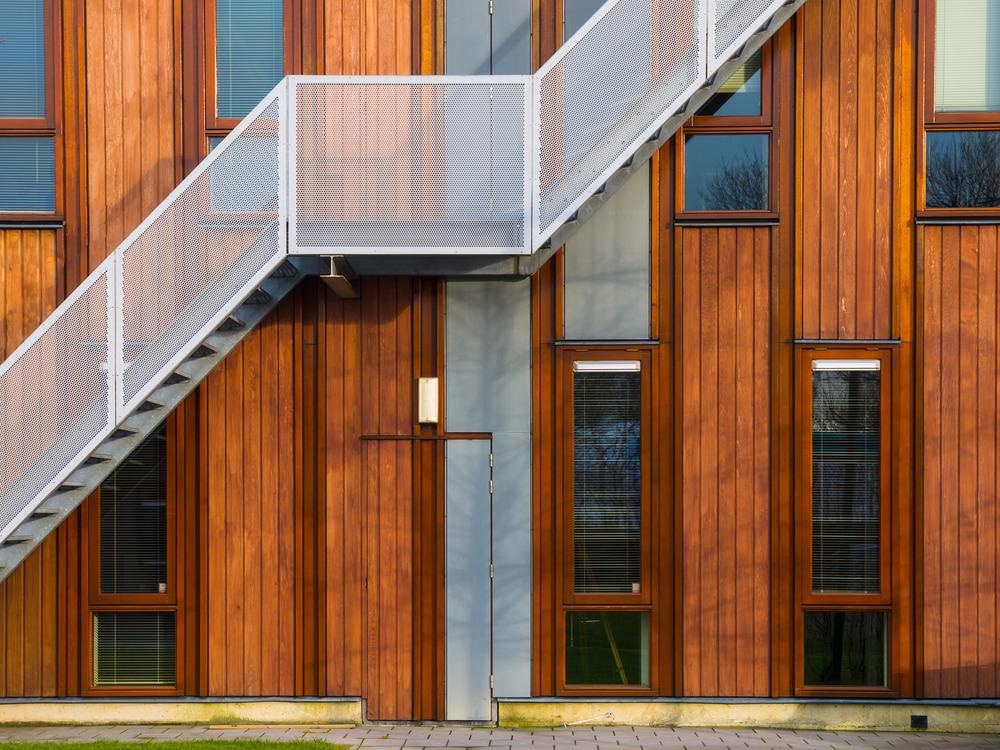Hybrid construction is ushering in a more sustainable future for the construction industry. The new method will allow construction companies to build in a more sustainable way without the hassle of drastically updating their current building methods. As a result, hybrid construction is positioned to be rapidly adopted by the construction industry, with the impact of reducing the emissions associated with construction activities.

Image Credit: Rudmer Zwerver/Shutterstock.com
A Need For More Sustainable Building Practices
The nature of the construction industry means that it is generally destructive to the environment. It requires large volumes of materials, the extraction and transportation of which are usually detrimental to the environment and contribute significantly to emissions. Now, with increasing focus for all industries to reduce their carbon footprint and improve their sustainability, the construction industry is looking at new ways they can build with less environmental impact.
To illustrate the urgency to achieve this goal, the construction industry currently accounts for 39% of the world’s total energy and process-related carbon dioxide (CO2) emissions, 11% of which is attributed to the manufacture of building materials such as steel, cement, and glass.
There are a number of ways the construction industry can reduce its carbon emissions. For example, changing the current standard for the production and transportation of materials has the potential to significantly reduce CO2 emissions. Recent figures have revealed that our reliance on concrete as a building material is responsible for dumping more than 2.8 billion tonnes of CO2 into the atmosphere each year, and the rising demand for concrete will only serve to worsen this figure.
Additionally, the construction industry is incredibly energy-intensive, and its use of fossil fuels to power tools and transportation is linked with the sectors extremely high emissions. The industry as a whole accounts for 36% of the world’s total energy usage, this figure demonstrates how energy intensive the industry truly is.
Sustainability in construction is gaining more attention due to its potential to address the sector’s carbon emissions and make it more environmentally friendly. Sustainable construction aims to reduce the energy consumption and waste associated with every stage of the construction process, with the end goal of developing an industry that has far less impact on the environment by establishing new processes that can reshape the industry for good.
The Role Of Hybrid Construction In Sustainable Construction
Hybrid construction is a building concept that utilizes combinations of materials to achieve the same structural efficiency while enhancing a construction project’s sustainability and reducing its carbon footprint. Studies have shown that hybrid structures are architecturally sound, economical, sustainable and can produce the same structure types as conventional construction. While initial costs associated with switching to hybrid construction often seem high, these costs balance out over time and eventually hybrid construction is more cost-effective than traditional methods.
Additionally, hybrid construction offers companies a method of building that does not require them to change their building methods, enabling them to seamlessly switch to gain the benefits of greater sustainability and fewer emissions.
One example of a recent project that successfully utilized hybrid construction is that of Metsä Wood and its partners, who created a novel, hybrid sandwich wall element. The innovation is a combination of Kerto® LVL (laminated veneer lumber) with concrete.
The benefits of building with such a material are plentiful. For example, the elements constructed with the hybrid sandwich wall material are significantly lighter than those constructed with traditional materials, meaning that less energy is needed to transport and lift them, thus reducing the project’s energy requirements. Additionally, the material drastically reduces demand for concrete, and, therefore, reduces the environmental damage associated with concrete production and transportation. Further to this, hybrid construction allows for elements to be constructed offsite, which results in faster build times and a reduction in noise pollution and waste.
Continue reading - Calcium Carbonate Concrete: Building on Recycling
The constructor of Metsä Fibre’s new Rauma sawmill, Skanska, aims to be carbon neutral by 2045. The use of the hybrid sandwich element is seen as an important step to achieving this. The walls for the sawmill’s log sorting building were produced at the precast element manufacturer Lipa-Betoni’s factory and was the first time a hybrid material had been produced at this location. It is likely that it will not be the last, as this project is one of many that are encouraging a profound shift in the industry. Manufacturers who get on board with hybrid construction early on are likely to benefit from the rapid growth that is predicted to come.
The exact formation of the hybrid sandwich wall element used in this project was a Kerto LVL panel used as a load-bearing core, surrounded in an insulation layer and reinforced concrete outer shell.
Projects like this are essential to demonstrating the capabilities of hybrid construction, as well as highlighting their benefits. Further to this, hybrid construction projects show how these materials, which are more environmentally friendly and contribute fewer emissions, can be easily adopted without the need to change construction methods. It is hopeful that examples like this will further encourage the use of hybrid construction in order to address climate change.
References and Further Reading
IEA (2019) Global Status Report for Buildings and Construction [Online] Available at: https://www.iea.org/reports/global-status-report-for-buildings-and-construction-2019
Metsa Group (2021) New sustainable hybrid sandwich elements combine concrete and wood. [Online] Available at: https://www.metsagroup.com/metsawood/news-and-publications/news/2021/new-sustainable-hybrid-sandwich-elements-combine-concrete-and-wood/
Hybrid Solutions (2021) HYBRID SOLUTIONS [Online].
Disclaimer: The views expressed here are those of the author expressed in their private capacity and do not necessarily represent the views of AZoM.com Limited T/A AZoNetwork the owner and operator of this website. This disclaimer forms part of the Terms and conditions of use of this website.